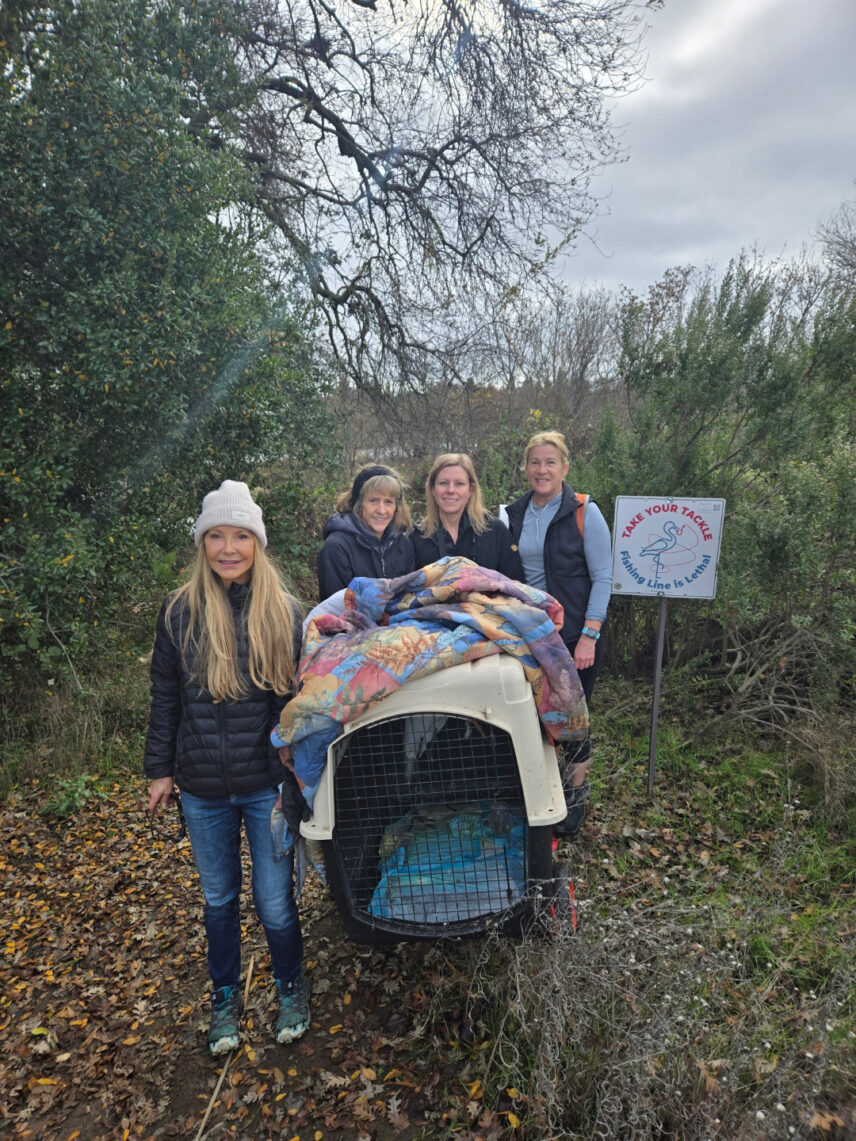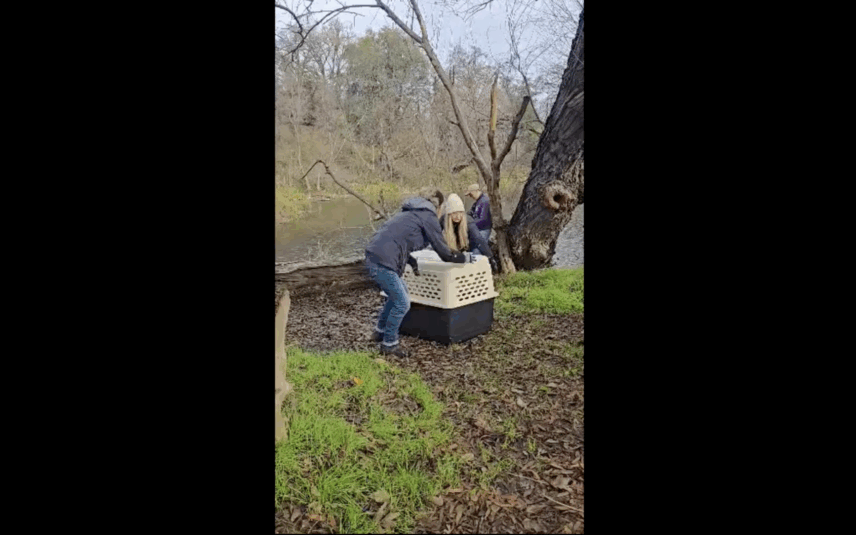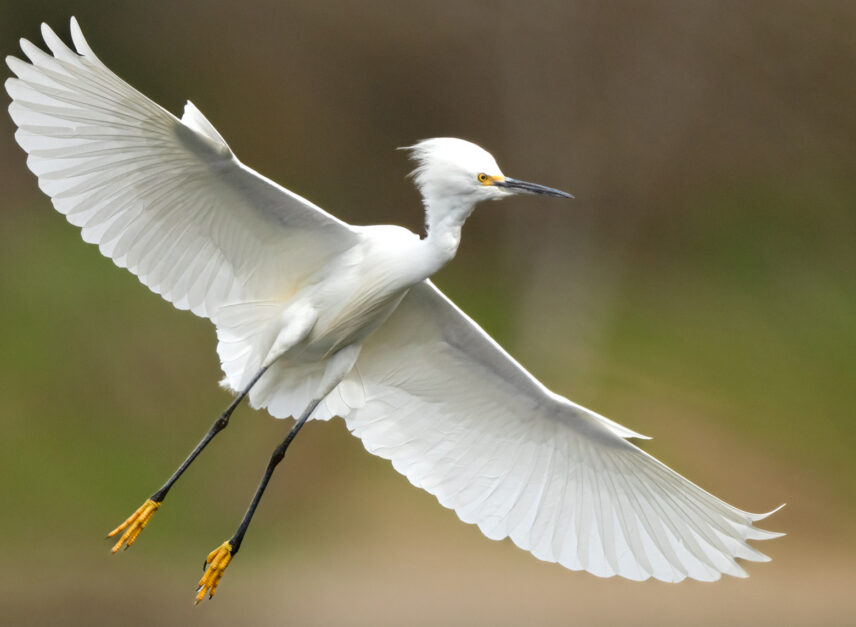Photo by Michele McCormick
Just three days before Christmas, we received an urgent email: community member Joe Maher had spotted a great egret on Mile 11 of the American River, visibly injured and entangled in fishing gear. It was the kind of call we always hope to prevent, but when it comes, we act fast.
Dr. Andrea Willey of the Waterbird Habitat Project suited up in her wetsuit and met with veteran wildlife rescuer Ben Nuckols, his assistant Tracy, and a team of committed volunteers, including Joe, at sunrise. Across the pond, the egret stood crouched on a small island, a fishhook lodged deep in its throat and fishing line tethered from its beak to its foot.
As the team approached, the bird broke the line and tried to escape, flying short distances to evade capture. What followed was nearly two hours of careful pursuit with nets in hand and the help of a fellow kayaker blocking the egret’s flight path across the water. The chase ended in a patch of dense blackberry brambles. Andrea seized the bird while the team cut them both free. Ben and Tracy quickly secured the egret in a carrier.
A Race Against the Holiday Clock
With the holidays fast approaching, finding a wildlife vet was no easy feat. Many clinics were closed or at capacity. But the team’s persistence paid off: Dr. Bader at Shingle Springs Veterinary agreed to help.
Inside the clinic, Andrea and Ben, both former Registered Veterinary Technicians, assisted with sedation and examination. Radiographs showed a fishhook embedded in the lower esophagus, just above the stomach. Working together, the team managed to palpate and push the hook through to the surface, cut it free, clean the wound, and close it with tissue glue.
The operation was a success, a rare outcome for waterbirds injured by fishing gear.

A Joyful Return
The egret spent the next several days recovering quietly under the care of Sierra Wildlife Rescue. By New Year’s, it was strong and ready for release. The team reunited at Mile 11, where the rescue had begun. Cameras rolled as they opened the carrier. The egret soared into the sky, circled back toward the team, and then glided to the far end of the pond to resume hunting.
The next morning, Andrea spotted the egret again, standing in the reeds and staring calmly in her direction. Perhaps it was a moment of recognition or a silent thank-you. Either way, it was a powerful reminder of why we do this work.
Why These Rescues Matter
One year earlier, on the same stretch of river, a Great Blue Heron was found hanging from a tree after ingesting fishing gear. Three days later, it died. That tragedy sparked the founding of the Waterbird Habitat Project. Since then, we’ve installed fishing line disposal stations, added educational signage, and built a network of volunteers, anglers, and community members committed to retrieving lost or discarded gear.
Our mission is to protect waterbirds from preventable injuries caused by abandoned fishing gear by removing hazards, raising awareness, and promoting stewardship of the American River.
We’re deeply grateful to everyone who made this rescue possible: Ben Nuckols, Tracy, Shingle Springs Veterinary, Sierra Wildlife Rescue, California Wildlife Encounters, and all the unsung heroes who show up for wildlife, even during the busiest time of year.

